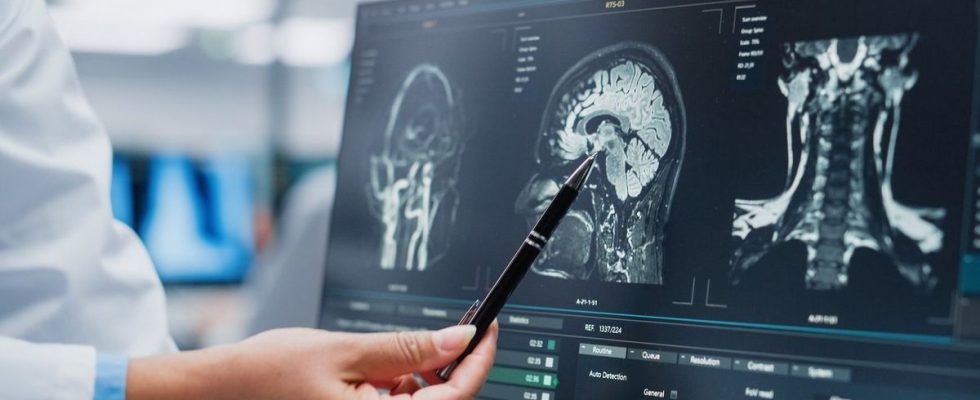Published on
Updated
Reading 2 min.
in collaboration with
Dr Gérald Kierzek (Medical Director of Doctissimo)
Medical validation:
March 06, 2024
A common belief states that we only use 10% of our brain. Myth or reality ? Dr Gérald Kierzek, medical director of Doctissimo, answers us.
It is a myth which has largely nourished literature and cinema. Recently, a major supermarket brand even relayed the idea that human beings “would only use 10% of his brain’s capacity“However, to date, there is no scientific evidence to justify this preconceived idea.
A misconception dating from the last century
The origin of this “theory” remains unclear, although some experts associate it with an American psychologist from Harvard, William James. For others, the origin would be attributed to Albert Einstein.
“The initial reasons for this misconception are not clearly identified. Some historians hypothesize that because early neurobiologists showed that certain regions of the brain were associated with certain functions (the auditory cortex, the visual cortex, the cortex engine, for example), they were able to suggest the existence of zones without a precise function, or even inactive”, details the government website Santé.fr.
An evolutionary aberration
However, very quickly, scientists denied the fact that 90% of the brain would remain inactive. No organ develops so that it is ultimately not used to its maximum capacity.
“It’s a neuro myth“, confirms Dr. Gérald Kierzek. “We know that areas of the brain are sometimes used in different, complementary ways. But we also know that the brain is used in its entirety and functional MRI proves it. Closing your hand, talking, walking… activate many brain areas“.
So there is never only 10% of the brain that is active. Moreover, even when an individual is at rest, the brain expends energy to supervise vital functions such as breathing, heart rate and memory.
The incredible plasticity of the brain
And when an area is damaged, “another zone takes over“, further specifies the emergency doctor. This is what we call cerebral plasticity, which allows the brain to recover after trauma, disorders or lesions but also to mitigate the impact of neurodegenerative diseases (Alzheimer’s, Parkinson’s, vascular dementia, etc.).
“Ultimately, a serious and extensive lesion would be necessary for the brain to only function at 10%… with a deep coma as a result, where only a few deep brain regions would not be extinguished.“, specifies Professor Marc Vérin, neurologist and vice-president of research at Orléans University Hospital, to our colleagues at Le Figaro.
10% of the number of brain cells?
Another dubious theory: if the 10% usage mentioned refers to the number of brain cells, this theory remains unfounded.
“We cannot say that only 10% of our brain cells work; since the cell, if it does not function, dies. Which would mean that 90% of our cells are dead,” says the medical director of Doctissimo.
The last often-discussed misconception concerns “functional cells“.
About nine out of ten cells in the brain are support cells, also known as glial cells, which provide support and protection to nerve tissue.
The remaining 10% is made up of neurons, considered to be “real functional cells“, according to the details of Dr. Gérald Kierzek.
However, some experts say that the 10% of cells that deal with thought could potentially take advantage of neurons to increase their number, and thus increase the capacity of the brain.
“Except that in reality, glial cells cannot become neurons. They have a role distinct from other cells and cannot transform.” reveals the medical director of Doctissimo.
A theory which therefore does not hold water!

